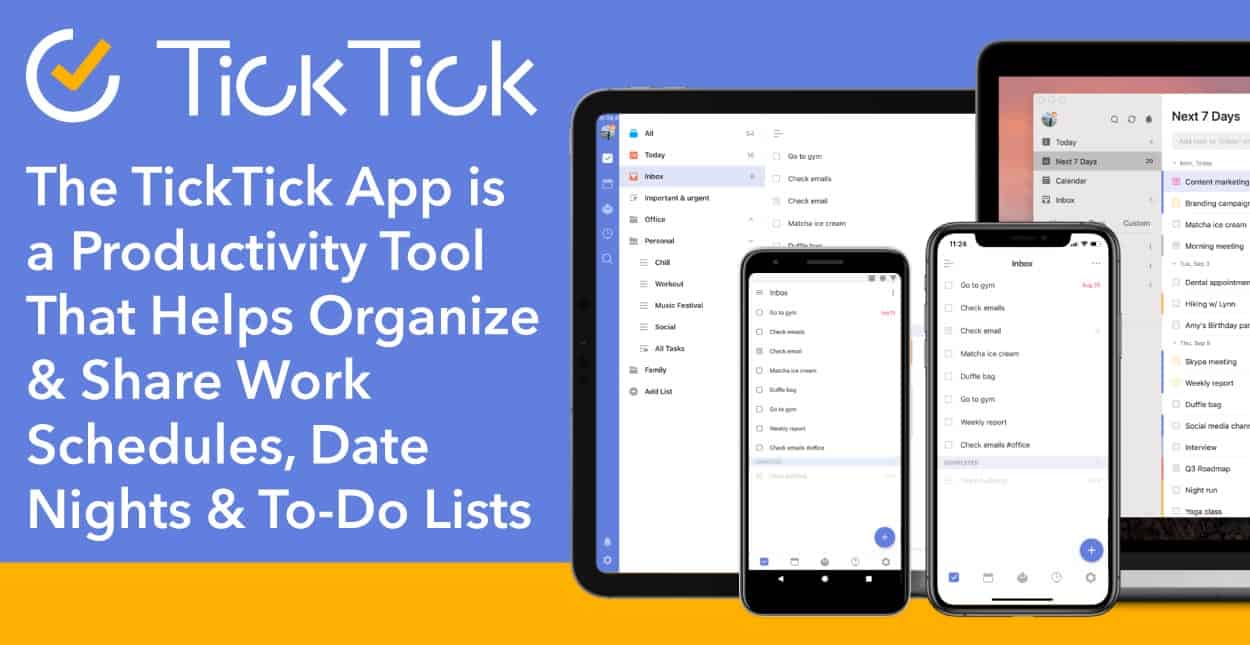

- #ZAPIER TICKTICK UPDATE#
- #ZAPIER TICKTICK FULL#
- #ZAPIER TICKTICK SOFTWARE#
- #ZAPIER TICKTICK DOWNLOAD#
#ZAPIER TICKTICK DOWNLOAD#
These types aren't all mutually exclusive, so some tools may tick a few (or even all) of these boxes.Ĭloud-based tools: These scalable web-based solutions allow you to crawl websites, pull online data, and then access it through a platform, download it in your preferred file type, or transfer it to your own database.īatch processing tools: If you're looking to move massive amounts of data at once-especially if not all of that data is in consistent or current formats-batch processing tools can help by conveniently extracting in (you guessed it) batches. Sure, you might get a crab or two, but you'll also get a bunch of other stuff to sift through.ĭata extraction tools fall into four categories: cloud-based, batch processing, on-premise, and open-source. If the data source has a mechanism for automatically notifying or updating changes after extraction, you may not need incremental extraction.įull extraction is like tossing a huge net into the water then yanking it up. This is useful if you want to create a baseline of information or an initial dataset to further refine later.
#ZAPIER TICKTICK FULL#
Full extractionįull extraction indiscriminately pulls data from a source at once.

To continue the crabbing metaphor, incremental extraction is like using a baited line that goes taut whenever there's a crab on the end-you only pull it when there's a signaled change to the apparatus. Identifying these changes requires the dataset to have timestamps or a change data capture (CDC) mechanism. You could use incremental extraction to monitor shifting data, like changes to inventory since the last extraction. Incremental extraction applies complex logic to account for changes in datasets. Like structured and unstructured data, one isn't universally superior to the other, and both can be vital parts of your quest for business intelligence. There are two data extraction methods: incremental and full. Using unstructured data often requires additional categorization like keyword tagging and metadata, which can be assisted by machine learning. The term "unstructured" is a little misleading in that this data does have its own structure-it's just amorphous. Unstructured data is less definite than structured data, making it tougher to crawl, search, or apply values and hierarchies to. Structured datasets can also be easy to automate for logging or reporting since they're in the same format. This consistency makes them simple to categorize, search, reorder, or apply a hierarchy to. Think of structured data like a collection of figures that abide by the same value guidelines. This binary might trigger Type-A judgment that structured is always preferable to unstructured, but each has a role to play in business intelligence. Structured data has consistent formatting parameters that make it easily searchable and crawlable, while unstructured data is less defined and harder to search or crawl. You ramp up timely marketing efforts and make plans to run holiday sales a month in advance.

#ZAPIER TICKTICK SOFTWARE#
Using data mining software to assess your month-over-month sales reports, you can see that sales of certain products peak around Valentine's Day and Christmas. Let's say your eCommerce shop processes thousands of sales across hundreds of items every month. Data mining exampleĭata mining, on the other hand, identifies patterns within existing data. The tool then updates your spreadsheet while you go on doing literally anything else. So, you use a data extraction tool to automatically crawl through those files instead and log specified keyword values.
#ZAPIER TICKTICK UPDATE#
You could manually open each one and update the spreadsheet yourself, but you'd rather pour Old Bay on an open wound. You'd like to start logging user data from those PDFs in Excel. Let's say you've got several hundred user-submitted PDFs. Data extraction exampleĭata extraction draws specific information from broad databases to be stored and refined. But while mining simply organizes the chaos into a clearer picture, extraction provides blocks you can build into various analytical structures. Both data extraction and data mining turn sprawling data sets into information you can use.


 0 kommentar(er)
0 kommentar(er)
